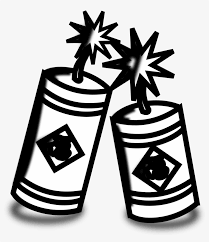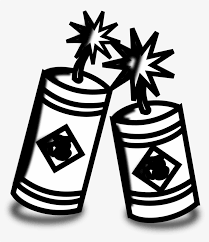
.png) Aarti
Aarti

No festive occasion or major celebration is complete without the sound and colours of fireworks in India. However, the cause for concern is the recurrence of firecracker-related mishaps on a regular basis.
Sample these. On February 27, one of the two daily wage labourers hired to transport firecrackers in connection with a religious function at Dadri, Greater Noida in U.P., reportedly lost his life while the other was grievously injured. It all happened so unexpectedly and quickly that no sooner than a lighted firecracker was carelessly burst, it inadvertently landed on firecrackers being carried in the e-rickshaw and the vehicle went into flames. The organisers of the event had obtained permission to carry out the procession but approval for bursting firecrackers was not granted.
On February 28, in a major explosion at Kochi, one person was killed and seven injured, including three children. It is said that the unauthorized firecracker storage unit, operating out of a house in a residential locality, had the licence for conducting fireworks display but not for storage. Not only the building got reduced to rubbles, the impact of explosion, felt around a 5-km radius, caused considerable damage to nearly 10 houses in the immediate neighbourhood. The windowpanes of vehicles parked in their porticos got smashed. Notably, in 2016, the fireworks accident at a temple in Puttingal, Kollam, killed 112 people.
A powerful explosion that occurred on February 21 at an illegally run firecracker factory had the licence to manufacture weighbridges and steel RCC at Una in Himachal Pradesh. 11 workers, including 6 women, who were literally burnt alive, died, leaving many others injured. Had the 1,905 kg of gunpowder since seized from the spot exploded, the devastation would have been simply unimaginable.
Last year, during the occasion of celebrating the New Year's Day, in a firecracker unit at Sivakasi, four persons were killed, and many others seriously injured when a shed exploded, destroying four other sheds.
The abovementioned accidents, which are only a tip of the iceberg, seem to have occurred because safety measures had not been followed.
Firecrackers, having its origins in traditional Chinese culture, were originally dry bamboo (when burnt produced an explosive sound) which was meant to scare away evil spirits. Over the years, across the globe, fireworks is a major custom to celebrate – be it the coming of the New Year, or during Deepawali, marriages etc. -- besides enhancing the festive atmosphere.
In India, the Explosives Act 1884, regulates the manufacture, possession, use, sale, transport, import and export of firecrackers (fireworks) which are classified as Class 7 explosives. Illegal manufacturing of firecrackers is punishable with imprisonment for a term which may extend to three years, or with fine which may extend to five thousand rupees or with both. Fireworks, defined as a low hazard explosive comprising any composition or device manufactured with a view to produce coloured fire or flame, light effect, sound effect, smoke effect (coloured or natural), or combination of such effect are subject to the Explosives Rules, 2008 which is quite comprehensive. Accordingly, some 34 types of sound emitting and colour and sound emitting fireworks are approved. This includes the popular “atom bomb”, “palm leaf crackers”, “garland crackers”, “coloured matches”, “flowerpots”, “rockets”, “sparklers” etc. Sound levels have been prescribed for all firecrackers.
It may be quite pleasant to see the various colours during bursting of crackers, like the white colour emitted by burning aluminium, magnesium and titanium; the orange colour due to carbon or iron; yellow colour because of sodium compounds; blue and red on account of copper compounds and strontium carbonates; green colour emitted due to barium mono chloride salts or barium nitrate or barium chlorate.
But such traditional firecrackers have been found to release several toxic metals that can be harmful for health. Reports seem to suggest that lead in crackers can impact the human nervous system; copper can trigger respiratory tract irritation. While sodium can cause skin problems, cadmium can damage the kidney. Besides the presence of nitrite can cause irritation in mucous membrane, eyes and skin, the most harmful ingredient in traditional firecrackers, namely, the nitrate can cause mental impairment.
Over the past few years, with air pollution reaching menacing levels, many states have banned traditional fireworks and only green firecrackers can be burst, that too for a limited period of time. It is said that green crackers reduce emissions substantially and absorb dust. Most importantly toxic metals in traditional crackers are replaced in green crackers with less hazardous compounds. But there are a few black sheep who seem to be selling banned firecrackers with impunity.
The Sivakasi firecracker industry, situated in Virudhunagar District of Tamil Nadu, accounting for the manufacture of 70 % of fireworks of the country, said to have nearly 1010 licenced units, has witnessed about 75 accidents during the last three years in which more than 55 people lost their lives. Many others have been maimed for life, losing limbs, eyes and many more suffering from hearing impairment.
The State Government, besides providing a compensation of Rs 3 lakh to the families of each of those killed in such accidents and Rs 1 lakh to those injured, has set up a Fire and Match Workers’ Welfare Board headed by the Labour Minister as the Chairman. Each unit has to annually contribute Rs 200 per worker employed to the Welfare Board to provide compensation to accident victims as also to those who are injured in the mishaps.
But why should accidents in respect of firecrackers take place in the first place and why should precious lives be lost if safety measures are scrupulously followed?
Among others, all units manufacturing firecrackers need to employ a duly licenced Foreman to ensure compliance of safety norms. Besides a comprehensive “safety management plan”, for ensuring and managing safety, every manufacturing unit must have emergency response planning/preparedness such as first aid and the emergency plan should be tested once in a year.
Further, every unit must have provision of escape route; evacuation plan, appropriate firefighting controls, consequence minimizing steps like control of spills, appropriate off-site response plan, maintenance of records, etc. The building housing firecrackers shall be so constructed or so lined or covered as to prevent the exposure of any iron or steel and the formation and detachment of any grit so as to come into contact with the explosive or ingredient thereof in such building and such interior benches, shelves and fittings shall, as far as reasonably practicable, be kept free from grit and otherwise clean.
Apart from efficient lightning conductors designed and erected as per specifications laid down by Bureau of Indian Standards, the connections to various parts of earth resistance of the lightning conductor terminal on the building to the earth shall be tested at least once in every year by a qualified electrical engineer.
Yes, compliance to the Explosives Act and the Rules by all stakeholders can greatly reduce avoidable tragedies in the firecracker industry. Accident prevention requires purposeful, continuous action on everyone’s part. Both inside manufacturing units and outside the workers handling firecrackers must understand the safety aspects and the supervisors should lead the effort in identifying possible hazards and correct them.
Safety first means zero accidents.